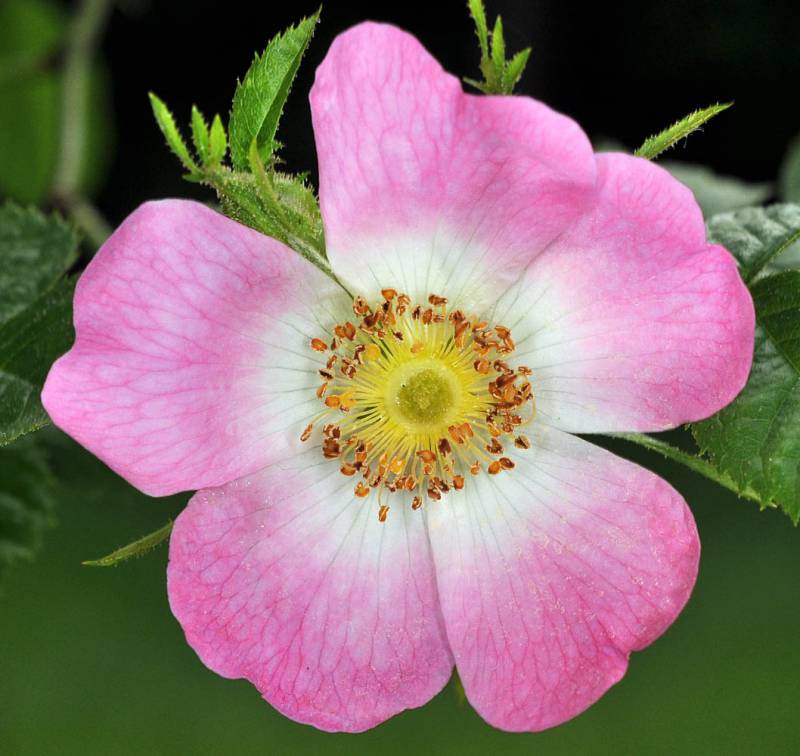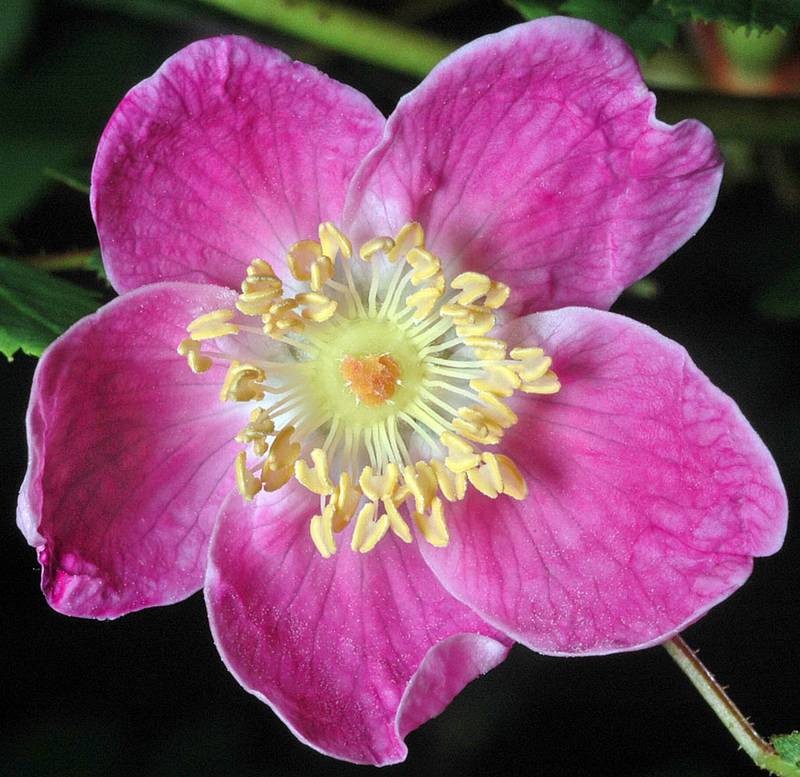Rosa rubiginosa
Rosa gymnocarpa
sweetbrier rose, small-flowered sweetbrier
bald-hip rose
Leaves alternate, deciduous, odd-pinnate with 5-7 firm leaflets;
leaflets broadly elliptic to sub-orbicular, 1-2.5 cm. long, doubly serrate with gland-tipped teeth, the lower surface with stalked glands and hairs.
Leaves alternate, deciduous, odd-pinnate with 5-9 leaflets, with stalked glands on the leaf rachis;
leaflets elliptic to elliptic-ovate, 1-4 cm. long and 0.5-3 cm. wide, doubly serrate, the teeth gland-tipped, otherwise glabrous.
Flowers in small clusters or solitary, on short, stout, glandular-bristly pedicels;
sepals 5,1-2 cm. long, with stalked glands and some slender lateral lobes, spreading, deciduous at maturity;
petals 5, 1.5-2 cm. long, bright pink;
stamens numerous;
pistils many, the styles densely short-hairy.
Flowers small, scattered at branch ends, usually solitary, the pedicel slender, glandular;
sepals 5, 5-12 mm. long, broadly lanceolate at the base contracted to a slender, tailed tip, early-deciduous;
petals 5, 1-1.5 cm. long, light pink to deep rose;
stamens numerous, pistils many, the styles early-deciduous.
Hips sub-globose or ovoid, 1-1.5 cm. long, glabrous, bright red.
Hips 1 cm. long, pear-shaped, scarlet or vermillion;
sepals early deciduous and not present on mature fruits.
Rosa rubiginosa
Rosa gymnocarpa
- Local floras:
CA,
OR,
WA
- Local Web sites:
CalFlora,
CalPhotos,
Flora NW,
PNW Herbaria
WildflowerSearch
iNaturalist (observations)
USDA Plants Database
- LBJ Wildflower Center
- SEINet
- Plants of the World Online
- Encyclopedia of Life
- Wikipedia
- Google Image Search
- Local floras:
BC,
CA,
OR,
WA
- Local Web sites:
CalFlora,
CalPhotos,
Flora NW,
PNW Herbaria,
Turner Photog.
WildflowerSearch
iNaturalist (observations)
USDA Plants Database
- LBJ Wildflower Center
- SEINet
- Plants of the World Online
- Encyclopedia of Life
- Wikipedia
- Google Image Search



